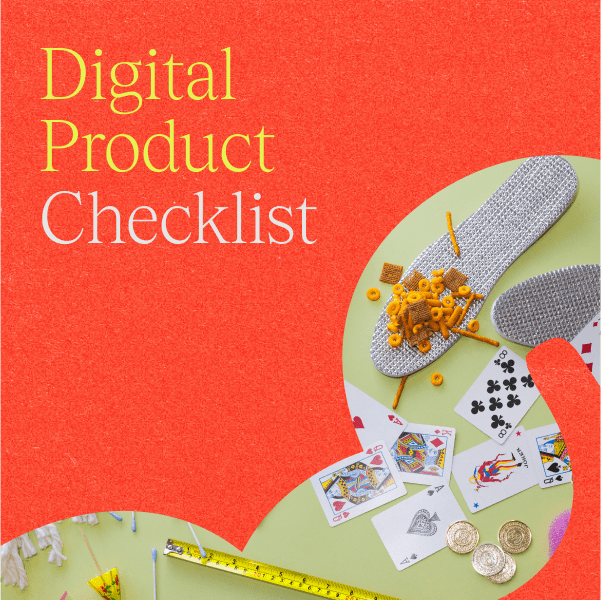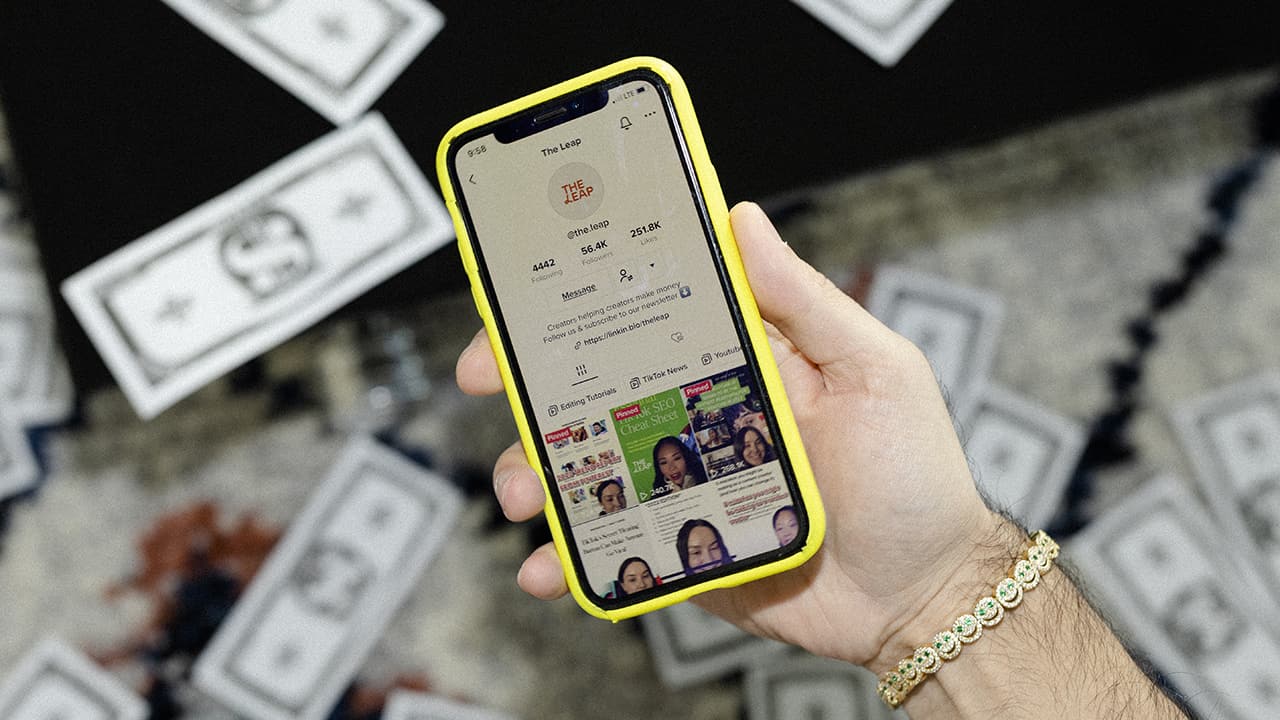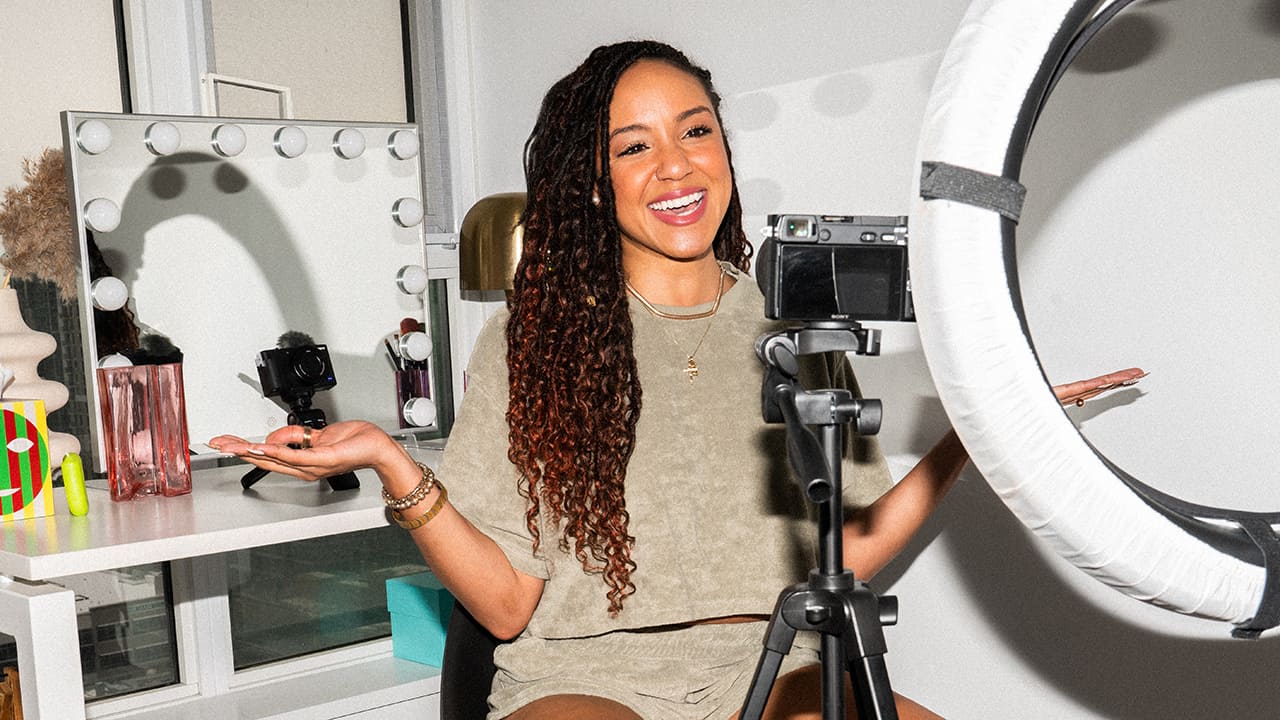You’ve read about it in the news. You’ve seen it on your grocery bill. You may even have heard finance bros whispering that the time to invest is now, because “it’s like everything is on sale.”
So what’s going on? Well, inflation is real, and economists are saying that a potential recession is nearing. But other than the frankly shocking price of eggs and increasingly daunting interest rates, why is an economic downturn important for creators to care about?
The quick answer is that there may be fewer brand deals to go around in this economic climate. And if you’re a creator, now is a great time to start protecting your bottom line by decreasing your financial dependence on brand partnerships. Things may look grim at the moment, but there are opportunities you can tap into to diversify your income. One simple way to do so is by creating and selling your own digital products — here’s why.
Influencer marketing is changing
During a recession, consumers tend to spend less, meaning companies make less revenue. To compensate for that, businesses typically reduce their spending. In particular, companies usually cut costs in marketing and advertising, even if that’s proven to be ill-advised.
How will shrinking marketing budgets impact creators? Experts are projecting that these cuts will cause creator rates to stay flat in 2023, and that smaller marketing and ad budgets may make competition for brand deals fiercer than ever.
But fear not: According to Influencer Marketing Hub’s 2023 benchmark report, over 83% of marketers and brands surveyed still believe influencer marketing is an effective form of advertising. And while the number may be down from 90% in 2022, the decrease is largely attributed to the current economy, rather than a changing opinion about the effectiveness of influencer marketing in general. In fact, 82% of respondents intend to dedicate a budget to it in 2023, up from 77% in 2022.
What creators need to realize is that having potential off-time from brand partnerships isn’t necessarily a bad thing. Not spending most of your time creating sponsored content means you’ll have more bandwidth to step back and focus on you: your vision, your offering, your business model, and how you can tap alternative revenue streams to recession-proof your brand in the future.
Sure, an impending recession may mean a change in influencer marketing. However, by taking back control of how you make money, you’ll be able to come to the table with more bargaining power when those brand deals do come around. Who knows? You may even end up shaping future influencer marketing trends yourself.
Creators, it’s time to diversify your income
While you may not be able to rely as heavily on brand deals, don’t panic. That just means you need to start generating revenue from other sources. In other words, you need to diversify your income.
“It’s important to diversify your income streams and build different revenue channels as a creator, so you have more control and security over your monthly income,” says Taylor Loren, digital creator and former head of marketing at Girlboss. “So if influencer marketing budgets get cut, you can still be earning income from selling digital products, merch, or affiliate marketing.”
Loren’s comment highlights what creators need in order to thrive in an economic downturn: You need to have multiple income streams, so that if a recession causes one of them to have a slow season, you’ll still have other sources to supplement your income.
How to build new revenue streams
So how do you go about finding new revenue streams? A great place to start is to think about what you do, and what your audience would like from you, outside of brand endorsements and product placements.
You may consider starting a paid newsletter, creating an online course, or offering private-access content (bonus: this last one means you’ll build a community, which will give members an added reason to keep coming back). Start small, and focus on building out one new revenue stream at a time so you don’t feel overwhelmed.
“Focus on building up a new revenue channel,” Loren advises. “That could be building a YouTube presence, so you can reach monetization through people watching your videos. Or maybe you want to put more effort into affiliate marketing, and creating content designed to sell a specific product, so you can earn a commission on it through your links.”
There are numerous ways to establish new revenue streams. And ultimately, there’s no one-size-fits-all approach. Different combinations of income sources will work for different creators. So start by figuring out what your audience wants from you, and create an offering around that.
Ready to start earning money online?
Sign up to The Leap newsletter for useful tips, free resources, and insights from creators, delivered weekly right to your inbox.
Why creators should sell digital products
No matter what type of creator you are, creating and selling digital products is one of the easiest ways to diversify your income.
Digital products are downloadable products that can be purchased and delivered online. From e-cookbooks to daily mental health checklists, there is a near-endless number of digital products you can create based on your niche, expertise, and audience.
These digital downloads may even be more profitable than you think. Once you’ve created a digital product, you can earn passive income that continues to roll in, with little effort on your part. Think of the royalties that an artist continues to receive on a song long after it’s been written and released. Digital products are similar to that: while creating one requires time and effort upfront, it can be sold indefinitely and repeatedly with little extra work once it’s complete.
“Creating your own digital product, which you can always create content for and market to your audience, is a great way to earn revenue as a creator,” Loren says. “I launched a Content Calendar Template that can be used on Notion this year, and I’m seeing a lot of success from it. I like that since it’s a digital product, it can scale really easily and provide me with an income stream outside of brand partnerships.”
Loren’s template for planning content across social media channels is based on her decade-plus experience in social media marketing. She’s selling the template at $39 a pop, alongside her online courses on social media marketing priced from $99 to $497. The best part? She’s already put in the work building all of her digital products. So other than promotion, it doesn’t require much effort to make new sales and generate more profit.
7 Benefits of selling digital products
If we haven’t made it abundantly clear, creators need to diversify away from brand partnerships to weather out the looming recession. And if you’re looking for a way to grow your brand and build a sustainable income, creating and selling your own digital products might just be your best bet. Here are just some of the benefits of exploring this revenue stream:
1. Build up your brand, in a way that you control
You get total creative control over the digital products you make. Your products are based on what you want to sell and what you believe in, whether that’s your current mission and vision, or a new direction you’ve been wanting to branch out to. Digital products are an extension of your brand and expertise, and they can help you carve out a path into the future of your choosing. They represent you and where you want to go, not another brand’s marketing agenda.
2. Open unexpected doors
Your digital product may do more than just provide a new source of revenue: it could also give you surprising insight into your audience and what they like, guiding you to create even more engaging content and profitable products.
3. Grow your audience
“Build it and they will come.” Making content and products specifically for your audience signals to them that you understand them. It lets you bond with them. And by giving them what they want, you can find more like-minded followers — and maybe even new opportunities to partner with other creators.
4. Attract new brands
Yep, it’s ironic: Creating digital products to decouple from brand dependency could lead you to attract new brand sponsorships. Why? Great digital products — and their sales performance — are a fantastic way to catch a brand’s eye while helping to grow credibility within your niche.
5. Strengthen your financial security
Loosening your brand dependence will also provide you with revenue that you control, meaning that getting paid won’t be up to another business’ financial performance — or their opinion. This will continue to be a massive plus even after the economy bounces back.
6. Generate passive income
As mentioned, a digital product really is the gift that keeps on giving. Once you’ve created it, you can sell it as many times as you like with essentially little to no added work.
7. Boost your bargaining power
Finally, when you’re not financially dependent on brands, you can be pickier about the contracts you accept — including what you promote, how you do it, and how much you charge.
Create your first digital product!
Ready to get started? Grab The Leap’s 6-step checklist for selling your first digital product. It’s a free resource to help you set up your online store, figure out what type of digital product is right for you, and save time creating it. You’ll learn how to measure whether your idea has the potential to sell, and what to do if competition within your niche is too high.
Remember, whether you’re a a beginner or seasoned creator, selling digital products is always a future-minded move — the kind of move that will help you make bigger leaps.
Follow The Leap on TikTok and Instagram for more monetization tips for creators. We also make a newsletter.




